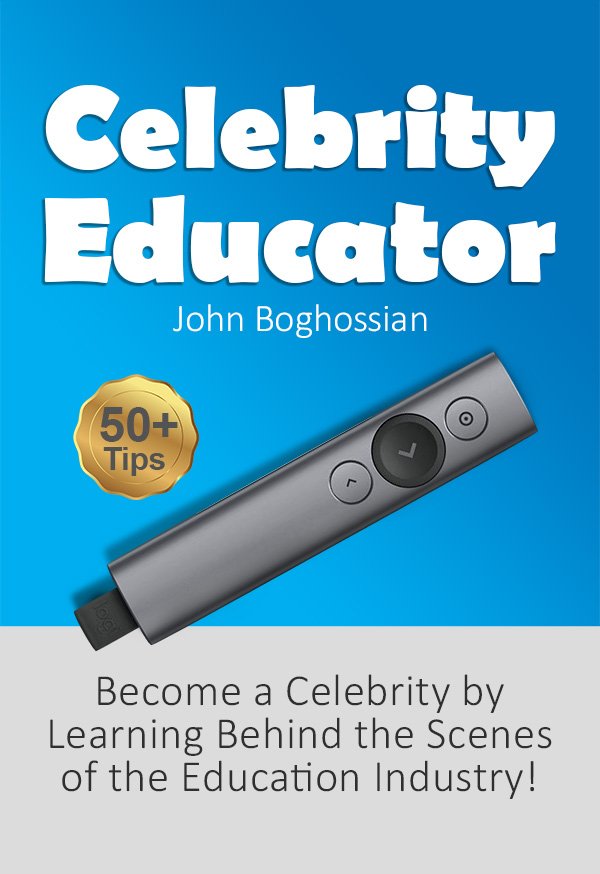Contents
There’s a world of opportunity waiting for your non-fiction masterpiece, but effectively marketing it can be a daunting task. You may have poured your heart and soul into writing, yet getting your work into the hands of readers requires strategic planning and savvy promotion. In this post, you’ll discover action-oriented tips to enhance your book’s visibility and ultimately boost your sales, ensuring that your valuable insights reach the audience they deserve. Let’s explore practical strategies that will empower you to effectively market your book and achieve your sales goals.
Crafting Your Author Brand
Your author brand represents your identity, values, and the unique essence that resonates with readers. Whether your expertise lies in personal development, history, or business, a strong brand encapsulates your vision and connects with your target audience. By consistently showcasing your voice and message, you enhance your credibility and solidify your position in the market. Readers are more likely to follow, engage with, and support authors who inspire trust and authenticity.
Defining Your Unique Value Proposition
Your unique value proposition (UVP) serves as the foundation of your author brand. Identify what sets you apart from other writers in your genre and articulate it succinctly. This might stem from your expertise, story, or perspective. For instance, if you specialize in nutrition, your UVP could focus on evidence-based insights tailored for busy professionals. Clearly communicating this differentiator ensures that potential readers understand what they can gain from your work.
Establishing a Consistent Online Presence
Maintaining a uniform online presence is fundamental to building your author brand. Utilize social media, your website, and email newsletters to consistently project your voice and message. Tailor your content to showcase your expertise, share behind-the-scenes insights, or engage with your audience through polls and Q&As. This consistency fosters recognition and recall, making it easier for readers to find and engage with your work.
Engaging with your audience across platforms strengthens bonds and boosts your brand recognition. For example, schedule regular posts that reflect your UVP while sharing valuable content, such as tips, articles, or videos that resonate with your readers. Use cohesive visuals and messaging that reflect your brand’s personality, ensuring each interaction aligns with your overall goals. Evaluating analytics will help in tweaking your strategy, allowing you to concentrate on what captivates your audience. Social media accounts like Instagram or LinkedIn can also facilitate networking, connecting you with other authors and potential collaborators, thus broadening your reach.
Leveraging Social Media to Engage Readers
To effectively leverage social media, focus on creating authentic connections with your audience. Engaging in conversations around your book’s themes, sharing insights from your writing process, and being responsive to your readers can foster loyalty and interest. Utilize storytelling techniques to share your journey and the inspiration behind your non-fiction masterpiece, ensuring your presence is both relatable and informative. Social media isn’t just a promotional tool; it’s an extension of your writing where readers feel welcomed and involved.
Choosing the Right Platforms for Your Audience
Your choice of social media platforms should align with where your target audience spends their time. For instance, LinkedIn is ideal for reaching professionals while Instagram appeals more to visual storytellers. Research demographic data to tailor your strategy effectively—considering age, interests, and profession helps pinpoint where to invest your energy for maximum reach and connection.
Creating Shareable Content that Captivates
Content that resonates with your audience encourages sharing and engagement. Focus on creating visually appealing graphics, infographics, or quote cards that encapsulate key messages from your book. Highlight interesting statistics, actionable insights, or memorable anecdotes that encapsulate the essence of your work. Make sure every post is crafted to spark conversation and invite dialogue, driving readers to examine deeper into your non-fiction narrative.
Consider conducting polls, asking questions, or starting conversations around trending topics related to your book’s subject. For example, if your book explores leadership tactics, pose questions about effective leadership styles. This not only engages your current followers but also makes your content shareable, increasing the likelihood of reaching new readers. Hosting live Q&A sessions or virtual book readings can further enrich interaction and create a sense of community, making your work more relevant and humanized in the digital landscape.
Building a Robust Email Marketing Strategy
Email marketing remains one of the most effective ways to connect with your readers and promote your non-fiction masterpiece. By building a robust email strategy, you can cultivate a loyal community around your work and maximize your book’s visibility. For actionable insights, check out 140 Book Marketing Ideas to Help Authors Increase Sales.
Growing Your Subscriber List Authentically
Authentically growing your subscriber list begins with offering value to your readers. Consider creating a free resource related to your book topic, such as a guide, checklist, or exclusive content, in exchange for email sign-ups. Promote these offerings on your website and social media platforms, inviting interested readers to join your mailing list while highlighting the unique benefits they’ll receive.
Designing Compelling Newsletters that Drive Sales
Your newsletters should not just fill inboxes but inspire action. Craft visually appealing emails that showcase your book’s unique insights and perspectives. Incorporate personal anecdotes, engaging subject lines, and clear calls-to-action that lead readers toward purchasing options or upcoming events. Regularly share exclusive content or limited-time offers to build anticipation and drive conversions.
In your newsletters, maintain a balance between professional presentation and personal touch. Use eye-catching designs, readable fonts, and compelling images to keep your audience engaged. Incorporating testimonials, snippets from your book, or insights on recent trends can position your work as relevant and necessary. Consistent updates on your writing journey or sneak peeks into your projects can also nurture a deeper connection with your audience, encouraging them to support your work through purchases and shares.
Utilizing Book Reviews and Endorsements Effectively
Book reviews and endorsements serve as powerful tools to establish credibility and attract new readers. They not only help potential buyers make informed decisions but also enhance your book’s visibility across various platforms. Harnessing the opinions of respected voices in your niche can elevate your work, making it more appealing to your Target audience. To maximize your book’s potential, create a strategy that encourages genuine feedback while showcasing testimonials across your marketing channels.
How to Solicit Genuine Reviews from Influencers
Reaching out to influencers in your genre can significantly impact your book’s visibility. Identify key figures with a loyal following who resonate with your message, then craft a personal request explaining why their feedback matters. Send them a copy of your book, along with a thoughtful note, making it clear that their honest opinion would mean a great deal. Engage with their content to establish rapport, as a genuine connection increases the likelihood of them responding positively.
Leveraging Reader Feedback to Enhance Visibility
Positive reader feedback can be instrumental in driving sales and increasing your book’s reach. Actively encourage your readers to leave reviews on platforms like Goodreads and Amazon, as these can significantly influence other potential buyers. Share snippets of these reviews on your social media and through email newsletters to create buzz and social proof around your book. Make reader reviews a central part of your marketing strategy; even a simple quote can serve as a powerful endorsement to attract new readers.
Creating a culture of feedback involves more than simply asking for reviews; it requires fostering an engaged community. Utilize calls-to-action in your content, prompting readers to share their thoughts on social media or through email campaigns. Consider running giveaways for readers who participate, which amplifies engagement and allows you to collect a diverse range of insights. As positive reviews accumulate, highlight them on your book’s webpage and promotional material. Leveraging reader feedback not only increases your book’s visibility but also builds trust, encouraging more readers to make a purchase decision.
Running Strategic Promotions and Giveaways
Implementing well-timed promotions and giveaways can elevate your book’s visibility significantly. Utilize platforms such as social media and email newsletters to announce these events, drawing readers in with exclusive offers. For more information, check out A Beginner’s Guide to Book Marketing Strategies. Each promotion can help create buzz and connect with your audience on a deeper level, generating excitement that translates into sales.
Crafting Enticing Offers that Generate Buzz
Enticing offers serve as a magnet for potential readers. Consider bundling your book with a related e-guide or holding a contest where the winner receives a personalized copy. Offering limited-time discounts compels readers to act quickly. Utilize your email list and social media channels to highlight these offers, emphasizing urgency and exclusivity to drive engagement.
Analyzing the Impact of Promotions on Sales Performance
Measuring the success of your promotions is imperative for refining future strategies. Analyzing metrics such as book sales before and after promotions, social media engagement rates, and newsletter open rates will provide valuable insights. Comparing different promotional tactics helps identify which strategies resonate most with your audience, ensuring you focus your efforts where they yield the best returns.
To dive deeper into the effectiveness of your promotions, track sales data and collect feedback from your customers. Utilize tools like Google Analytics to monitor referral traffic and conversion rates. For example, if a giveaway generates a spike in downloads but low sales afterward, it may indicate promotional tactics need adjustment. Keeping a close watch on these trends helps you fine-tune your approach, ultimately leading to more effective marketing strategies and increased book sales.
Final Words
Hence, as you commence on the journey of marketing your non-fiction masterpiece, implementing actionable strategies will significantly enhance your book sales. Focus on building your author brand, leveraging social media, engaging with your audience, and harnessing the power of email marketing. Each step you take in promoting your work not only elevates your presence but also connects you meaningfully with readers who appreciate your insights. Consistent effort and creativity will empower you to reach your sales targets and make a lasting impact in your field.








